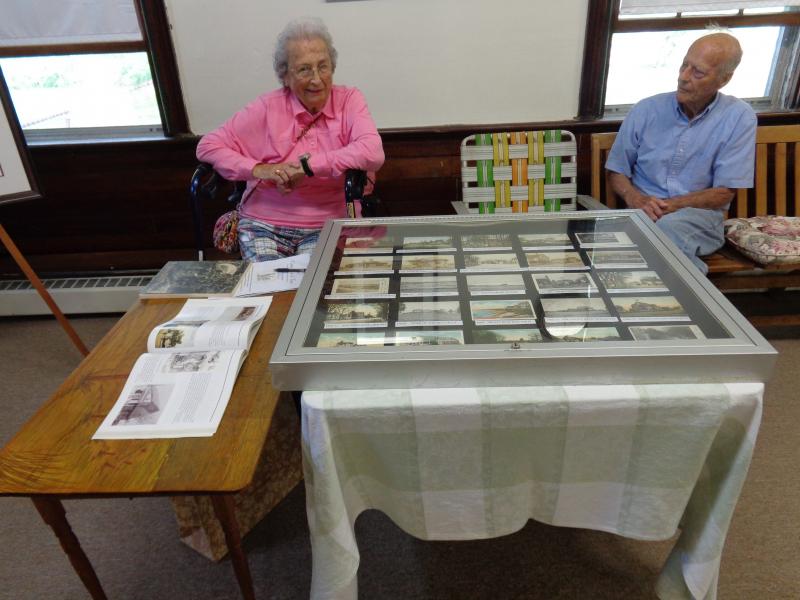Historical Society relives the late 1800s
The Dartmouth Historical & Arts Society transformed their headquarters at the 1871 Schoolhouse into a late 1800s viewfinder on September 10.
Now in its fifth year, the annual “Come back in time” event showcases aspects of life between 1871 and 1914, the lifespan of the schoolhouse on Russells Mills Road. Displays this year included clothing and postcards, along with 19th century games and spinning.
“It’s kind of an opportunity to educate people about the historical society and also get the kids involved,” said DHAS member Susan Guiducci.
This year, DHAS friend Pam Cole donated her great great grandparents’ wedding dress and suit for display. The pieces date to 1880.
“We always highlight a different talent or activity from that period of time,” she said. “We sometimes have a blacksmith come. Last year, it was silhouettes. This year, spinning.”
DHAS friend Stacy Ryall worked on a petticoat using a 1892 treadle sewing machine, which is powered by pumping your foot.
DHAS member Kathy Plant — who had dressed in a ankle-length skirt, high-collar blouse, broach, and pinned-up curls for the event — said she loves seeing history come to life.
“It depends on the season what [the petticoat] would be made of — cotton, muslin, linen, or wool if it was to be worn in the winter,” said Plant.
DHAS members Elsie and Louie Haskell displayed 25 postcards of 1907-11 Dartmouth. Scenes included Lincoln Park’s grove and merry-go-round; North Dartmouth High School, when it was located behind the Gidley School on Tucker Road; Smith Mills Village (intersection of Route 6 and Faunce Corner Road); the salt works (built to collect salt from evaporated ocean water around the Padanaram Harbor); and the Toll Gate Inn by Padanaram Bridge.
“Being a town resident, if you haven’t seen these pictures, you don’t know where these places are,” said Plant.
Some demonstrations on the property catered to children.
“They do games for the kids. It’s not like Chuck E. Cheese,” said Guiducci.
Two games — hoops and graces — involve large hoops and wooden sticks. “You take the stick and hit the top of the hoop and try to roll it. It’s a game,” said Plant.
The Coin Club of Greater New Bedford also showed coins and paper money that were used during the time of the school house, including fractional currency, a three-cent silver coin, and gold certificate.
Plant said “watching the kids learning about some of the coins or bills that they’ve never seen before; even with the postcards with the adults” is her favorite part of the event. “The expressions,” she laughed.
In the side yard, DHAS member Inid Silva led demonstrations on a wash station — complete with a wash barrel and scrub board, ringer, and a rinse barrel with a clothesline.
The exhibit also included two William Allen wall prints — one of the Cummings Mill on Rock O'Dundee Road, and the other of the Slocum River at the Russells Mills Landing.
Across from the schoolhouse is a private residence that served as a Christian church, a children’s museum, and a doll museum, but not all at the same time, said Plant.
“[Great Rock Cemetery] is down Fisher Road, but it was the cemetery for that church,” said Plant. “The cemetery has the parishioners in it.”
DHAS member Marian Ryall conducted a tour through the cemetery, which is located behind the Dartmouth Grange’s 1133 Fisher Road location.
The re-enactment always aligns with the Grange Fair, said Guiducci. This year, it also aligned with an open house tour of Allen's Mill, led by the Dartmouth Natural Resources Trust.
















